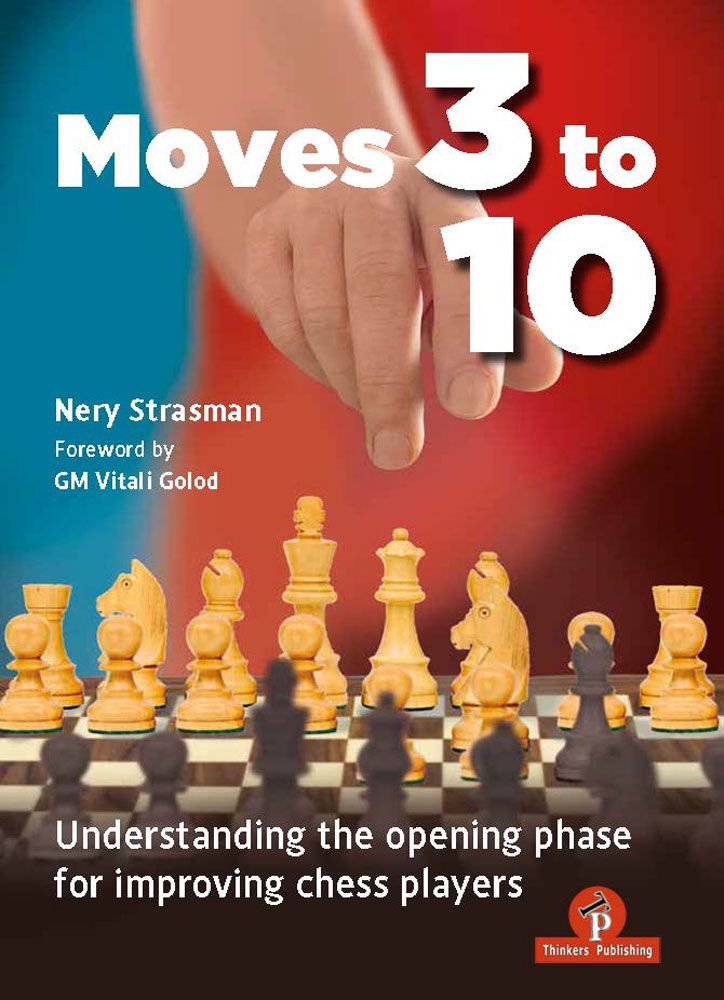I am sure we are all familiar with the uncomfortable experience of cramming in a large amount of opening theory into the memory banks, only to be surprised and disappointed when our opponents vary from the main lines very early on, leaving us not only regretting spending so much time memorizing so many moves but also wondering how we are supposed to get the better of the position to punish our opponents for their ‘crimes.’
One problem is that theory books won’t spend time and space covering very early deviations in any kind of depth. Another problem is that even if they do, we tend to skim over the material very quickly, believing we could easily find the best rejoinders over the board. Everything seems much easier ‘in the quiet of our study.’
It takes discipline to start thinking differently about the problem and to try then and fix it, enabling us to exploit the small deviations from theory.
Moves 3 to 10: Understanding the Opening Phase for Improving Chess Players by Nery Strasman, by Thinkers Publishing, now available on Forward Chess, deals exclusively with the problem – and how to meet it head-on instead of ducking away.
The reader is tested, via a series of positions – without any clues – on how to get the better position if the opponent tries to vary from the standard opening moves. It is usually not a large advantage – we are talking about big, early blunders here – but it is often enough to enable us to look forward to the middle game with more confidence.
In other positions, it is all about not stumbling over early problems and slipping into a poor position.
Essentially, this book will prove helpful to anyone who ever finds themselves feeling uncomfortable between the third and tenth moves, even if it is only infrequently. That probably applies to every chess player in the world!
It is worth spending some time studying each of the positions in the book, as they are all very instructive and some of them will undoubtedly be familiar to club and tournament players. The answers take the time to explain why certain tempting moves are not as effective as the correct answers.
Here are a couple of examples.
Black to Play
White’s last move was 6. d4.
What should Black do about the threat to the e5-pawn?
Here’s another example:
Black to Play
You will have to buy the book to read and enjoy the full explanations (and to discover the other 148 positions), but I think it would be a very worthwhile purchase.
I think this is an excellent and unusual book, which will repay serious study. Next time your opponent plays an early move you recognize as not part of the mainline theory, you will have more opportunities to turn the position in your favor.
Sean Marsh
- Dover Books are finally here! - November 20, 2024
- Book Review: Moves 3 to 10 by Nery Strasman - August 9, 2024
- The Life and Games of Dragoljub Velimirovic (Volume 2) by Georg Mohr and Ana Velimirovic-Zorica - July 23, 2024

